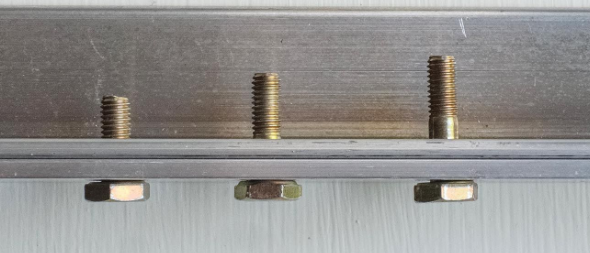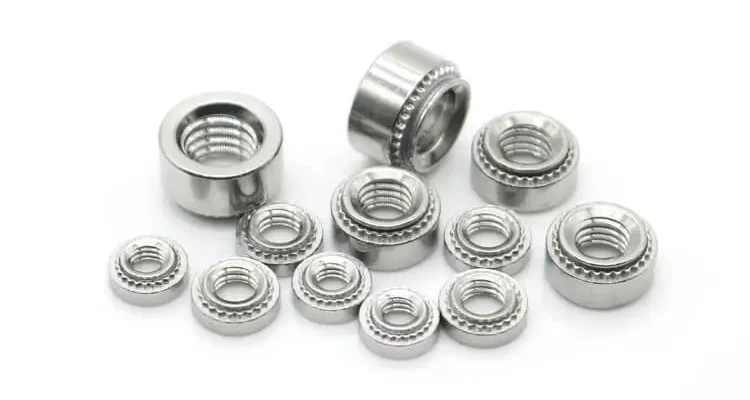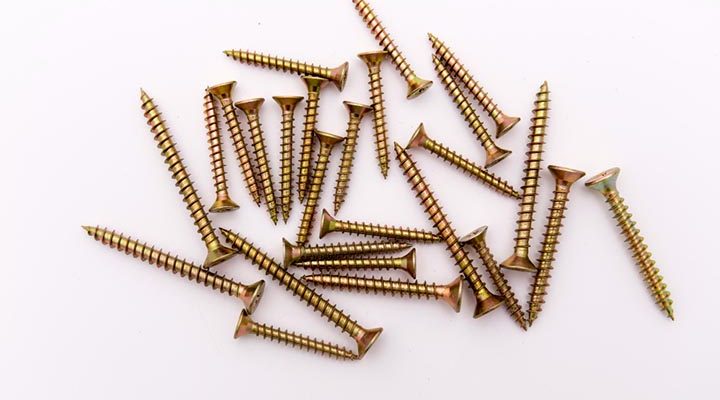
What determines the correct grip length of a bolt
The correct grip length of a bolt is typically determined by the combined thickness of the materials being fastened. For example, if fastening two steel plates of 8 mm and 12 mm, the bolt’s grip length should be at least 20 mm, with a preferred range of 22-25 mm for secure fastening.
Material thickness
To fix the two steel plates together, the thickness of the first steel plate is 8 mm, the thickness of the second steel plate is 12 mm, and the total thickness is 20 mm. In this case, the holding length of the bolt should be at least 20 mm, and it is best to choose a bolt with a length of 22-25 mm to ensure sufficient fixing force. For some large construction projects, the steel thickness should reach 50 mm or more, and the bolt holding length needs to reach 60 mm or more to meet the greater load demand.
In the aviation industry, the aluminum alloy sheet of the aircraft fuselage is usually thin, about 2-5 mm in thickness. In order to connect two such aluminum alloy sheets, the holding length of the bolts is selected from 6-8 mm to provide sufficient holding force. If the steel plate thickness for heavy equipment is up to 30 mm, the bolt holding length needs to be at least 35-40 mm to provide sufficient strength protection.
The common drywall thickness is about 12 mm, if the drywall needs to be fixed on the wooden structure, the holding length of the bolt should be at least 12 mm, but in order to ensure a stronger fixation, you can choose 15-18 mm bolts. In some outdoor furniture installations, the thickness of the board is usually about 20 mm, and the holding length of the bolt should be 22-25 mm.
In Bridges and steel structures, the thickness of steel plates exceeds 40 mm and even reaches 60 mm. In this case, the holding length of the bolt is more than 10-15% of the thickness of the steel plate, and when the thickness of the steel plate is 50 mm, the holding length needs to be between 55-65 mm to ensure that the structure bears a huge load. In the connection of the bridge bracket, the material thickness should reach 80 mm, and the holding length of the bolt needs to reach 90 mm or more.
Choosing the right grip length can avoid the cost increase caused by excessive use of bolt length, such as 5 cm grip length bolt may be 20% more expensive than 3 cm bolt, so in some projects, the precise selection of the right length bolt can effectively control the budget. In a project that needs to install 1000 bolts, the average savings of 0.5 yuan per bolt can save 500 yuan for the entire project.

Thread engagement
The length of the thread engagement should be at least 1.5 times the diameter of the bolt, and if the bolt is 10 mm in diameter, the length of the thread engagement should be at least 15 mm to ensure that the nut is fully integrated with the bolt. Insufficient meshing length may lead to loosening of the connection, reduced load, and even fracture.
For harder materials such as steel, the length of thread engagement can be relatively short. Bolts with a diameter of 12 mm are used in steel connections, and the screw mesh length can be designed to be about 18 mm, enough to ensure the stability of the connection. For softer materials such as aluminum or plastic, the thread engagement length needs to be longer. For bolts with a diameter of 12 mm, for example, the screw engagement length of aluminum is recommended to be more than 24 mm to ensure that the thread can firmly bite into the material.
When the furniture is to install a wooden table, the diameter of the bolt is 8 mm, and the thread engagement length of at least 12 mm is required to ensure the stable use of the table for a long time. If the threads are not engaged enough, the table may loosen over time, ultimately affecting the service life.
In bridge and steel structure engineering, high strength bolts with a diameter of 20 mm need 30 mm or more thread engagement lengths to withstand the weight and external stresses of the building. According to engineering design specifications, if the thread mesh is insufficient, it will not only reduce the safety of the structure, but also may lead to the failure of the entire project. Assuming that a steel beam’s connection points need to withstand 50 tons of force, and the design thread engagement length is only 20 mm, it can lead to a 15% reduction in bearing capacity, increasing the risk of structural collapse.
An industrial project requires the installation of 5,000 bolts, each with a diameter of 16 mm and a thread engagement length of 24 mm. If the screw mesh length is shortened to 20 mm, each bolt can save 0.3 yuan, and the overall saving is 1500 yuan. Insufficient thread mesh length can cause bolts to loosen or break, eventually requiring more parts to be replaced, and these maintenance costs can be as high as $5 per bolt replacement.

Bolt type
Different bolt types have different application scenarios and carrying capacity, and in the construction industry, common hexagonal head bolts are suitable for fixed points that require large torque. With a diameter of 16 mm and a length of 50 mm, the hexagonal head bolt can withstand a tensile force of more than 10,000 Newtons, which is very suitable for large projects such as Bridges and steel structures. In some lightweight applications such as wood bolts used in furniture assembly, the diameter is generally 6-8 mm and the length is 30-40 mm, which can provide enough fixing force, but its carrying capacity is significantly lower than that of industrial bolts.
High-strength bolts are mainly used in the need of high bearing capacity occasions, the steel structure of the building is often used in the connection of 10.9 high-strength bolts, its diameter can reach 20 mm, the maximum tensile strength of such bolts can reach 800 mpa, can withstand great tensile forces and shear forces, suitable for high-load environment connection. In the construction of some large Bridges, a single high-strength bolt can even withstand hundreds of tons of tension.
Stainless steel bolts are widely used in environments that require corrosion protection, such as Marine engineering and chemical plants. The corrosion resistance of 304 stainless steel bolts is much higher than that of carbon steel bolts, which can maintain a long service life in the environment of high humidity and corrosive gases, and its tensile strength is usually 500-700 mpa, although it is slightly lower than high-strength bolts, but in the environment of high salt spray concentration, it can provide better durability. 304 stainless steel bolts with a diameter of 12 mm and a length of 100 mm are selected for storage tank installation in chemical plants, which can be used for more than 20 years in highly corrosive environments.
Expansion bolts are suitable for fixing concrete walls. They provide tightening force by expanding inside the walls. Expansion bolts with a diameter of 12 mm are capable of withstanding pulls of more than 5,000 Newtons and are widely used to install heavy equipment such as air conditioners and water heaters. Another common special bolt is a stud in a car engine, used to connect the cylinder block to the head. With a diameter of 10 mm and a length of 80 mm, the stud can withstand high temperatures and vibrations while maintaining good mechanical properties.
The price of conventional carbon steel hexagonal head bolts is relatively low, and the unit price of carbon steel bolts with a diameter of 16 mm and a length of 50 mm on the market is about 1.5 yuan. The price of 10.9 high-strength bolts is 2-3 times that of ordinary carbon steel bolts, and the unit price may reach 3.5-4 yuan. A stainless steel bolt with a diameter of 12 mm and a length of 100 mm costs about 8-10 yuan, but its service life is often more than 3 times that of carbon steel bolts.



